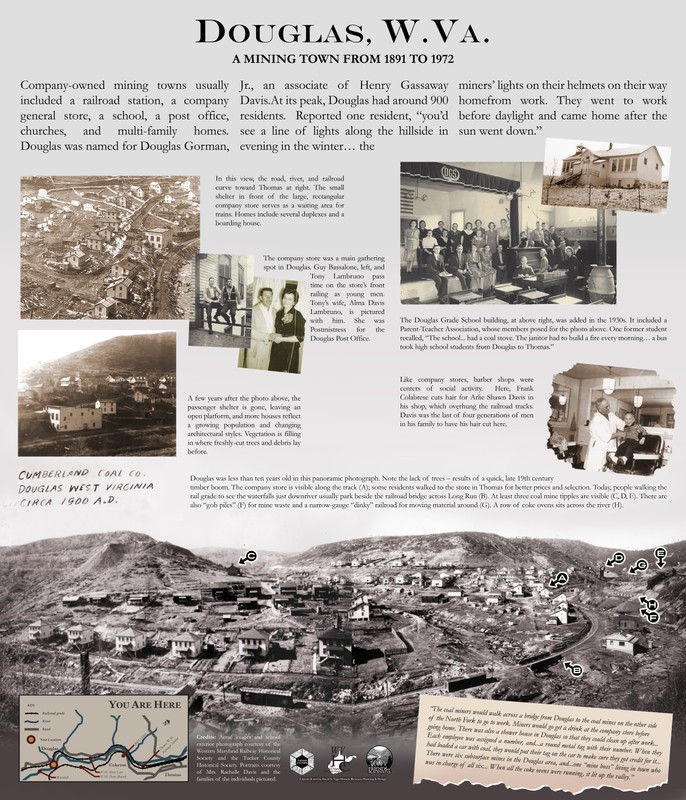Douglas, WV
Introduction
Text-to-speech Audio
Henry Gassaway Davis's companies built mines in all directions around Thomas, and built branch lines to connect them. At each mine, company-owned mining towns sprang up. They included a railroad station, a company general store, a school, a post office, one or more churches, and single- and multi-family homes for the miners and their families. Douglas is one such community.
Images
Historical sign for Douglas, WV

Train at Douglas depot with Coke Ovens

Backstory and Context
Text-to-speech Audio
Douglas is on the North Fork of Blackwater River, a mile above its mouth. It was founded in 1891, by the Gorman brothers, Douglas Sr. and William H., who were senior partners in the Cumberland Coal & Coke Company, a subsidiary of the Davis Coal & Coke Company. The town was named for Douglas Gorman Jr., but since there was already a Douglas post office in Calhoun County, West Virginia, the post office was named for Albert Gorman, a brother of Douglas Jr., and both sons of Douglas Gorman Sr. The altitude of Douglas is 2806 feet; its population in 1910 was 900, in 1920 it was 600; and it has never been incorporated. Douglas has been both a lumber town and a coal town, primarily the latter. The lumber industry quit Douglas in 1912 and the coal industry petered out in 1954.
At its peak, when the mill, mines and coke ovens were working full capacity, the population was made up of many nationalities. The sawmill employed only native Americans, but the coal company employed everybody: Russians, Austrians, Germans, Polish, Irish, English, Italians, Hungarians, Lithuanians, Serbians, and Mexicans. In 1925, there were six Negro families in Douglas. Each family averaged five persons and very few of the children continued in school beyond the sixth grade, because of environment, lack of compulsory school laws, and the fact they wanted to go to work for themselves. Due to the long hours the coal miners saw daylight only on Sundays and holidays. There were no churches in the early days. The Protestants held services in the school building until 1926, when the coal company remodeled a warehouse for their use as a church. The Catholics went to Thomas until 1934, when they began using the school building.
Sources
Fansler, Homer Floyd. History Of Tucker County. 1962. Parsons, W.Va.: Mcclain Printing Company, 1993. Print.
Friends of Blackwater
Friends of Blackwater
